The high-profile collapses of First Brands Group (a global auto-parts supplier) and Tricolor Holdings (a subprime auto lender) have stirred some alarm amongst investors. The central question investors are asking is: are these isolated failures, or early warnings of deeper credit stress?1
I think the answer lies somewhere in the middle.
First Brands’ bankruptcy is a striking story. The company, once an industrial roll-up boasting 26,000 employees and a portfolio spanning 25 well-known automotive brands, borrowed over $10 billion from a mix of Wall Street lenders and private funds. But as new directors and forensic accountants now sift through its books, they’ve uncovered what appears to be $2 billion in unaccounted-for funds and billions more in off–balance sheet borrowing. 2
From my vantage, it appears that exposure to First Brands’ bad loans is spread across dozens of banks and collateralized loan obligation (CLO) funds, which is actually a good thing. It means no one institution’s holdings are likely large enough to trigger contagion. Even still, it’s a sharp reminder of the lack of transparency that has crept into parts of the private debt market, now approaching $2 trillion in size. It is relatively common to see these types of credit quality issues creep up near the end of an easy money environment. Increased risk aversion for debt investors who have been searching for yield would be appropriate in response to the First Brands’ bankruptcy.
Then there’s Tricolor Holdings, a Texas-based subprime auto lender that targeted borrowers without credit histories or documentation. It filed for liquidation last month, listing more than $1 billion in liabilities. The business model, based on “buy here, pay here” auto sales financed through asset-backed securities, crumbled under rising delinquencies and tighter funding conditions. Now, some tranches of Tricolor’s securitized debt that once traded above par are only worth pennies on the dollar.
Taken together, these bankruptcies show how weaker players at the fringes of the credit spectrum are struggling. Years of easy liquidity and investor demand for yield have encouraged aggressive underwriting. As the economy normalizes and interest rates settle above the near-zero era, some of those bets are now being tested.
The private credit market, in particular, is where I’m increasingly turning my focus. Defaults in business development companies (BDCs) and other private-lending vehicles have been creeping higher. Roughly 11% of loans in these portfolios now pay interest “in kind”, that is, with IOUs instead of cash—signaling stress among smaller borrowers. Fitch’s measure of private credit defaults hit 9.5% this summer before easing slightly.
This is a market and a trend worth monitoring very closely. As I write, however, I think it’s important to qualify that “higher defaults” does not mean “credit crisis.” Public credit markets, the most transparent barometer of corporate financial health, aren’t showing much strain. High-yield bond defaults remain near 1%, well below their long-term average of around 4%. And investment-grade and high-yield spreads, as seen in the chart below, remain historically tight. Investors aren’t demanding higher risk premiums, which suggests the market is still confident that these issues are more local than systemic.
The takeaway for investors, in my view, is to acknowledge that credit markets are running hot. The additional yield investors receive for holding corporate debt versus Treasurys has fallen to near 25-year lows, prompting companies to issue debt at record levels. This strength underscores confidence in the market, but it could also signal investor complacency. It’s important to constantly try to differentiate between the two.
Bottom Line for Investors
If I could sum this story up in a single sentence, it would be this: Remember that easy money often sows the seeds of future problems.
Or put in an even simpler way: bad loans are often made in good times.
The failures of First Brands and Tricolor are cautionary tales, and I think they warrant greater investor attention. They remind us that in the far reaches of the private and subprime credit universe, excesses built up during the era of cheap money are still unwinding. Investors should watch these developments closely, but also be careful not to overreact. Evidence from broader credit markets, like tight spreads, low defaults, and contained fallout, does not point to systemic stress, at least not yet.
1 Wall Street. https://advisor.zacksim.com/e/376582/es-306d7869-mod-article-inline/5tql5g/1355093773/h/YN-hUysQ1y4uie04NzdszYAQt7KthqrMofBorT0yCqY
2 Wall Street. https://advisor.zacksim.com/e/376582/mod-Searchresults-pos-4-page-1/5tql5k/1355093773/h/YN-hUysQ1y4uie04NzdszYAQt7KthqrMofBorT0yCqY
DISCLOSURE
Past performance is no guarantee of future results. Inherent in any investment is the potential for loss.
Zacks Investment Management, Inc. is a wholly-owned subsidiary of Zacks Investment Research. Zacks Investment Management is an independent Registered Investment Advisory firm and acts as an investment manager for individuals and institutions. Zacks Investment Research is a provider of earnings data and other financial data to institutions and to individuals.
This material is being provided for informational purposes only and nothing herein constitutes investment, legal, accounting or tax advice, or a recommendation to buy, sell or hold a security. Do not act or rely upon the information and advice given in this publication without seeking the services of competent and professional legal, tax, or accounting counsel. Publication and distribution of this article is not intended to create, and the information contained herein does not constitute, an attorney-client relationship. No recommendation or advice is being given as to whether any investment or strategy is suitable for a particular investor. It should not be assumed that any investments in securities, companies, sectors or markets identified and described were or will be profitable. All information is current as of the date of herein and is subject to change without notice. Any views or opinions expressed may not reflect those of the firm as a whole.
Any projections, targets, or estimates in this report are forward looking statements and are based on the firm’s research, analysis, and assumptions. Due to rapidly changing market conditions and the complexity of investment decisions, supplemental information and other sources may be required to make informed investment decisions based on your individual investment objectives and suitability specifications. All expressions of opinions are subject to change without notice. Clients should seek financial advice regarding the appropriateness of investing in any security or investment strategy discussed in this presentation.
Certain economic and market information contained herein has been obtained from published sources prepared by other parties. Zacks Investment Management does not assume any responsibility for the accuracy or completeness of such information. Further, no third party has assumed responsibility for independently verifying the information contained herein and accordingly no such persons make any representations with respect to the accuracy, completeness or reasonableness of the information provided herein. Unless otherwise indicated, market analysis and conclusions are based upon opinions or assumptions that Zacks Investment Management considers to be reasonable. Any investment inherently involves a high degree of risk, beyond any specific risks discussed herein.
The S&P 500 Index is a well-known, unmanaged index of the prices of 500 large-company common stocks, mainly blue-chip stocks, selected by Standard & Poor’s. The S&P 500 Index assumes reinvestment of dividends but does not reflect advisory fees. The volatility of the benchmark may be materially different from the individual performance obtained by a specific investor. An investor cannot invest directly in an index.
The Russell 1000 Growth Index is a well-known, unmanaged index of the prices of 1000 large-company growth common stocks selected by Russell. The Russell 1000 Growth Index assumes reinvestment of dividends but does not reflect advisory fees. An investor cannot invest directly in an index. The volatility of the benchmark may be materially different from the individual performance obtained by a specific investor.
Nasdaq Composite Index is the market capitalization-weighted index of over 3,300 common equities listed on the Nasdaq stock exchange. The types of securities in the index include American depositary receipts, common stocks, real estate investment trusts (REITs) and tracking stocks, as well as limited partnership interests. The index includes all Nasdaq-listed stocks that are not derivatives, preferred shares, funds, exchange-traded funds (ETFs) or debenture securities. An investor cannot invest directly in an index. The volatility of the benchmark may be materially different from the individual performance obtained by a specific investor.
The Dow Jones Industrial Average measures the daily stock market movements of 30 U.S. publicly-traded companies listed on the NASDAQ or the New York Stock Exchange (NYSE). The 30 publicly-owned companies are considered leaders in the United States economy. An investor cannot directly invest in an index. The volatility of the benchmark may be materially different from the individual performance obtained by a specific investor.
The Bloomberg Global Aggregate Index is a flagship measure of global investment grade debt from twenty-four local currency markets. This multi-currency benchmark includes treasury, government-related, corporate and securitized fixed-rate bonds from both developed and emerging markets issuers. An investor cannot invest directly in an index. The volatility of the benchmark may be materially different from the individual performance obtained by a specific investor.
The ICE Exchange-Listed Fixed & Adjustable Rate Preferred Securities Index is a modified market capitalization weighted index composed of preferred stock and securities that are functionally equivalent to preferred stock including, but not limited to, depositary preferred securities, perpetual subordinated debt and certain securities issued by banks and other financial institutions that are eligible for capital treatment with respect to such instruments akin to that received for issuance of straight preferred stock. An investor cannot invest directly in an index. The volatility of the benchmark may be materially different from the individual performance obtained by a specific investor.
The MSCI ACWI ex U.S. Index captures large and mid-cap representation across 22 of 23 Developed Markets (DM) countries (excluding the United States) and 24 Emerging Markets (EM) countries. The index covers approximately 85% of the global equity opportunity set outside the U.S. An investor cannot invest directly in an index. The volatility of the benchmark may be materially different from the individual performance obtained by a specific investor.
The Russell 2000 Index is a well-known, unmanaged index of the prices of 2000 small-cap company common stocks, selected by Russell. The Russell 2000 Index assumes reinvestment of dividends but does not reflect advisory fees. An investor cannot invest directly in an index. The volatility of the benchmark may be materially different from the individual performance obtained by a specific investor.
The S&P Mid Cap 400 provides investors with a benchmark for mid-sized companies. The index, which is distinct from the large-cap S&P 500, is designed to measure the performance of 400 mid-sized companies, reflecting the distinctive risk and return characteristics of this market segment.
The S&P 500 Pure Value index is a style-concentrated index designed to track the performance of stocks that exhibit the strongest value characteristics by using a style-attractiveness-weighting scheme. An investor cannot directly invest in an index. The volatility of the benchmark may be materially different from the individual performance obtained by a specific investor.



